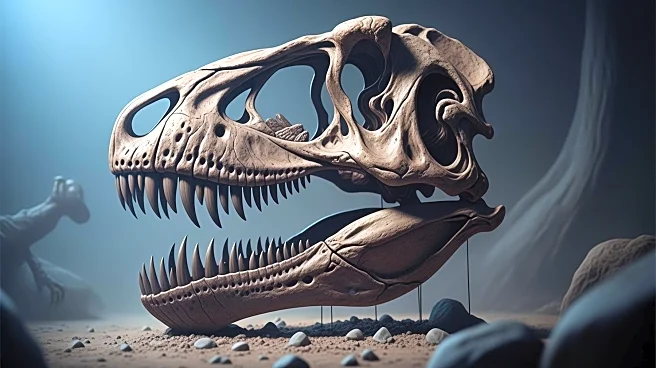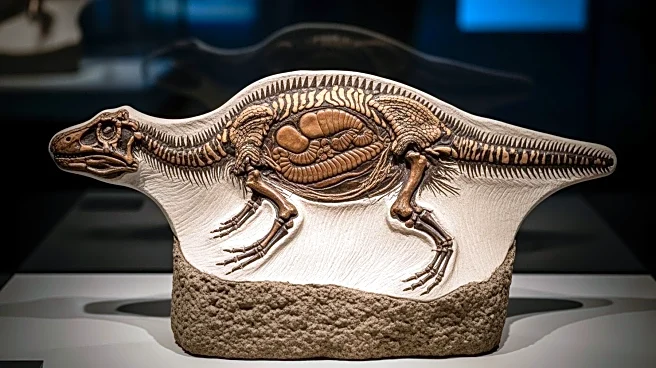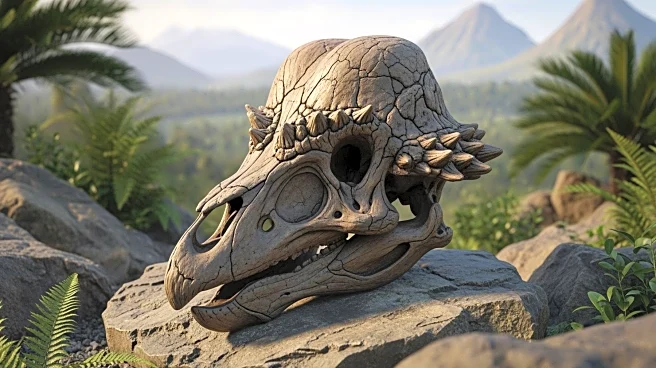What's Happening?
An international team of paleontologists has identified a new dinosaur species named Khankhuuluu, believed to be the closest-known ancestor of the giant Tyrannosaurs. Led by Jared Voris and Dr. Darla Zelenitsky
from the University of Calgary, the discovery was published in Nature. Khankhuuluu, which lived about 86 million years ago, was a medium-sized predator that evolved after the extinction of other large carnivorous dinosaurs. The species, named 'dragon prince,' provides insights into the evolution of Tyrannosaurs, showing a transition from small predators to apex predators.
Why It's Important?
The discovery of Khankhuuluu offers valuable information about the evolutionary history of Tyrannosaurs, one of the most iconic dinosaur groups. Understanding the traits and adaptations of this ancestor helps scientists trace the lineage and diversification of Tyrannosaurs, shedding light on how they became dominant predators. The research also highlights the migration patterns of these dinosaurs between Asia and North America, providing evidence of their evolutionary journey. This contributes to the broader understanding of dinosaur evolution and the factors that influenced their development and spread across continents.
What's Next?
Researchers plan to study earlier and less-understood ancestors of Tyrannosaurs to fill in the gaps of their evolutionary story. Further exploration of fossil sites in Mongolia and other regions may lead to the discovery of additional species that can provide more insights into the evolution of these prehistoric giants. The findings may also prompt a reevaluation of existing fossils, using new techniques to uncover hidden details about the early stages of Tyrannosaur evolution.













